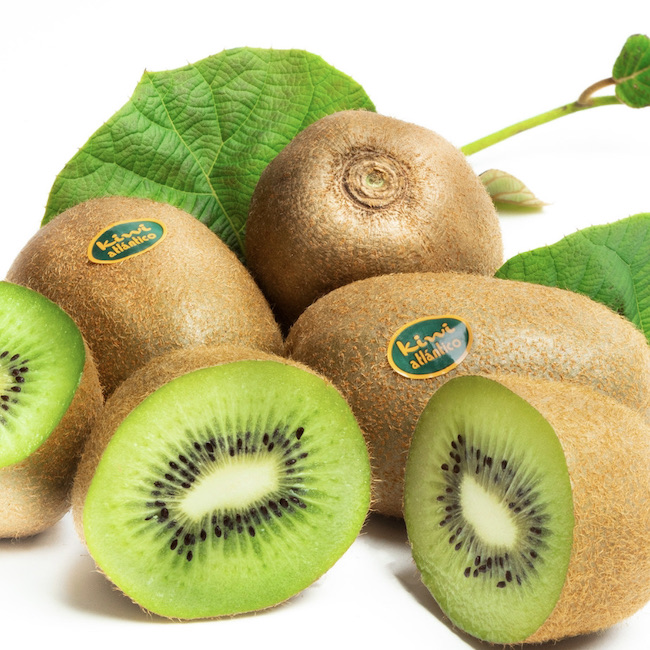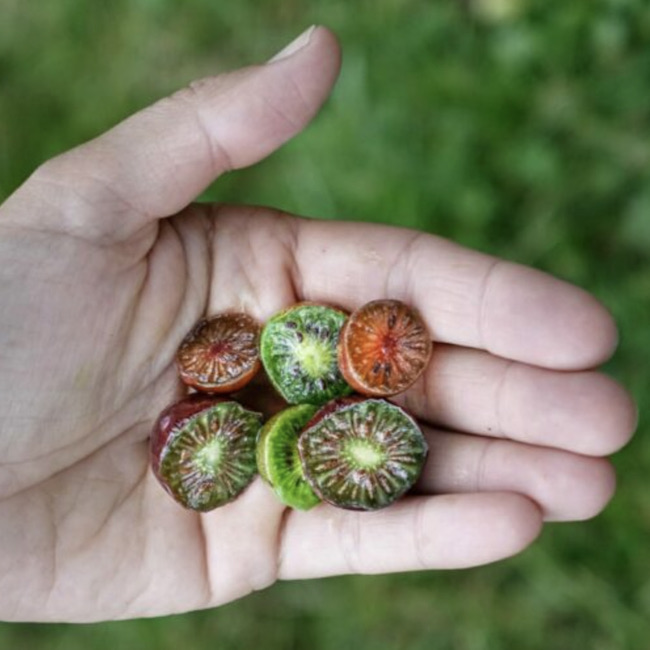.png.transform/rendition-xs/image_image%20(1).png)
Spanish Kiwi: The Atlantic in a Fruit
Kiwi in the north of Spain? Yes! This fruit, which is usually grown in other countries, has been in the north of the Iberian Peninsula for more than 40 years. It has experienced remarkable growth in recent years, and there is every indication that it will continue to do so in the future
Known as Atlantic kiwi, cultivation in northern Spain dates back to the 1980s. Galicia's mild climate and the proximity to the river flood meadows in Asturias have helped the kiwi, a fruit from China, take root here, strengthening its position as a resource of enormous economic and gastronomic potential for both regions.
One of the pioneers in planting kiwi in northern Spain was Manuel Olivo, father of Rafael Olivo, a current representative of the Asturias Kiwi Growers' Association and general manager of Kiwis La Rodriga. "My father had the idea of planting it here. He liked the product; it worked and I helped him while I was studying." The Hayward variety in particular is the most popular and yields the best results, due to the soil, which is rich in organic matter, and the proximity to water in both regions.
History repeats itself with neighbors in nearby Galicia, where the Piñeiro family (Fincas San José de la Levada) started to grow kiwi in the south of the province of Pontevedra in 1986. Since then, both regions have been able to combine resources to position the Atlantic kiwi in the Spanish market. A good example of this is the creation of the Kiwi Atlántico Association, founded in 1988. It has more than 115 members; some 30 growers, both Asturian and Galician; and it works with large national supermarket chains. As a result, the association has become the largest distributor of kiwi in Spain. Its latest projects include a new plantation in Acevedo (in the Galician province of Lugo), where they expect to produce 600,000 kilos per year.

Green kiwi: the king of the north
Although there are hundreds of varieties, the green kiwi (Hayward) rules in northern Spain. Its flavor is more acidic than the yellow kiwi, which is known for its sweetness, and its skin is rougher and hairier. After four decades of experience with this variety, kiwi growers know that green kiwi is less problematic than yellow kiwi, which is more sensitive to frost. The same is true of the red and blue varieties, which require protective netting.
According to data from the Organic Agricultural Production Council of the Principality of Asturias (COPAE) for 2022, the total production of Asturian kiwi reached 3,823 tons and continues to increase, while Galicia is the leader in production, with more than 18,000 tons per year.
In parallel to the traditional kiwi, lesser-common production of the kigüino have emerged, a miniature version of the kiwi, of the Arguta variety, which resembles a berry, weighs about 10 grams, and its skin, which similar to that of a grape, is also edible. They are small and colorful, and Cristina Secades is one of the few producers (she is the owner of Terramor company) of this interesting minikiwi that contains high levels of antioxidants and twice as much fiber as the classic kiwi, as well as being a source of vitamin C. "Additionally, as they don't have 'hair,' allergies aren't really an issue," explains Cristina, whose company produces a ton a year.
In 2017, she decided to recover crops on the family farm where Terramor operates, where animals and different fruits coexist, among them, the baby kiwi, which also has the Asturian quality seal Alimentos del Paraíso, which protects the quality, origin, and unique qualities of the baby kiwi.

Territory and kiwi
How is it possible that a fruit like kiwi has taken root so well in northern Spain? The key is in the climate... and the soil. Technical engineer Ignacio Cavanilles, who has ties to the Asturias Kiwi Growers Association, knows the area perfectly. "Temperatures are moderate, both in winter and summer, and the absence of frost in spring protects the kiwi," he explains. Add that to the quality of the soil, its drainage capacity, and the high levels of humidity, and we get a real oasis for kiwi.
In the case of Asturias, moreover, the fertile plains of the Nalón and Narcea rivers provide the right environment so that nearly 50% of Asturian kiwi crops are in those areas, while in Galicia, which has nearly 450 hectares dedicated to kiwi, the Bajo Miño area is where most of the crops are concentrated.
The harvest takes place once a year, in November, and fortunately, beyond the ravages that the cold can cause, the kiwi plant is not affected by any particular pest or disease, which also favors the transition initiated by most of the growers to organic cultivation.
To protect the plant from possible hail or gusts of wind, many farms have "shading nets," which also maintain humidity and prevent water loss. The harvesting process is semi-mechanical, with teams of workers using ergonomic bags, which are stored on skids.
The future of the Atlantic kiwi: some key statistics
What does the future hold for Atlantic kiwi? Recent years have shown how the sector has grown steadily. Spain is one of the world's main consumers of kiwi, estimated at around 130,000 tons per year, compared with the approximately 25,000 tons produced domestically, making it one of the five largest producers in Europe. Spanish kiwis are exported, and the United Kingdom is one of its main markets.
Additionally, in March 2023, Asturian kiwi growers started the process to create a PGI, a process that is expected to take a long time and in which objectives, costs, and the area of scope still need to be established. "We have to find a way to be more competitive and have more prestige," explains Rafael Olivo.
The Atlantic kiwi is well-positioned at present and it has a more than promising future for a fruit that arrived in Spain just over half a century ago and can already be considered to represent green Spain.

